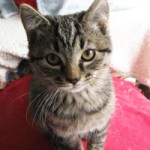Brendan Steele’s recent success has made golf newsworthy in Idyllwild once again. News media around the country love to highlight the odd fact that he grew up in a town without a golf course. But Idyllwild has not always been a golf-free zone.
There’s a reason for street names like Fairway Drive and Green Avenue near Astrocamp or Country Club Drive just beyond the Idyllwild School. In fact, golf in Idyllwild can be traced back to 1901, when the Idyllwild Sanatorium proclaimed “golf links unequaled” in its first publicity. In 1914, the Idyllwild Inn also built a course, but the heyday for local golfers came between 1925 and World War II.
Once Claudius Emerson bought the Inn in 1917, he touted golf to attract both tourists and lot buyers. He also promised to upgrade the existing course, but did not follow through until he got into an economic arms race with rival developers Frank Strong and George Dickinson:
- 1923 — Strong & Dickinson, who had retained Fern Valley and the heights above Marion View Drive when they sold Emerson the lower valley, hired Pine Cove developer Walter Wood to begin subdividing and marketing lots.
- 1924 — Emerson countered by opening his Country Club Subdivision between Marion View Drive and Tollgate Road, which overlooked a planned 9-hole golf course between Tollgate and Strawberry Creek above Camp Emerson.
- 1925 — Wood retaliated by hiring away Emerson’s resident manager of the Idyllwild Inn to help create a competing course on Saunders Meadow. Hastily opened, this new Idyllwild Golf Club offered life memberships for $250 including a free building lot nearby.
- 1926 — Wood, vying for members, built an elegant clubhouse, furnished by Idyllwild’s pioneer furniture craftsman Hal Holcomb and featuring a swimming pool. Upon opening early in 1927, it immediately became a social center rivaling Emerson’s Idyllwild Inn.
- 1927 — Emerson quickly built the Idyllwild Plunge, for both tourist and resident swimmers, and raised the ante by announcing plans to expand his course to 18 holes, dam Strawberry Creek for a lake, and add an aircraft landing field.
- 1928 — Wood renamed his enterprise the Mount San Jacinto Golf Club and staged another grand opening. But it was a losing struggle against Emerson’s established presence, as mounting bills drained his bank account and deer munched his greens.
- 1929 — Emerson staged a gala celebration for his newly upgraded country club, which became widely known as “The Mile-High Golf Course.” He hired a golf pro to run tournaments to attract the state’s best talent.
- 1930 — Wood’s creditors finally lost patience. His club sank into foreclosure and was sold to a military academy for a summer camp site. Its only trace today is the clubhouse, which serves as Astrocamp’s dining hall.
Emerson’s golf program remained healthy throughout the 1930s, even as he overplayed his hand by buying the Domenigoni Ranch (today’s Idyllwild Arts campus) for expansion, just before the Wall Street crash ushered in the Great Depression. His finances were stretched to the breaking point and, with his bankruptcy in 1938, Emerson left the Hill. Then the war undermined everything.
After the war, developer Jerry Johnson bought up the land and sold it to Palm Springs developers for subdivision into the Tollgate neighborhood we know today. For the first time in three decades Idyllwild had no golf course.
There was a brief effort to revive the sport in 1961, when the Tahquitz Lake Golf Club opened on Dutch Flat near Foster Lake. But its plans for full-scale resort development ran into stiff local opposition, and the club folded after a mere three-year run. By the time Brendan Steele was born, Idyllwild golf had been only a memory for nearly 20 years.











It is truly a nice and helpful piece of info. I am happy that you just shared this useful info with us. Please keep us informed like this. Thanks for sharing.